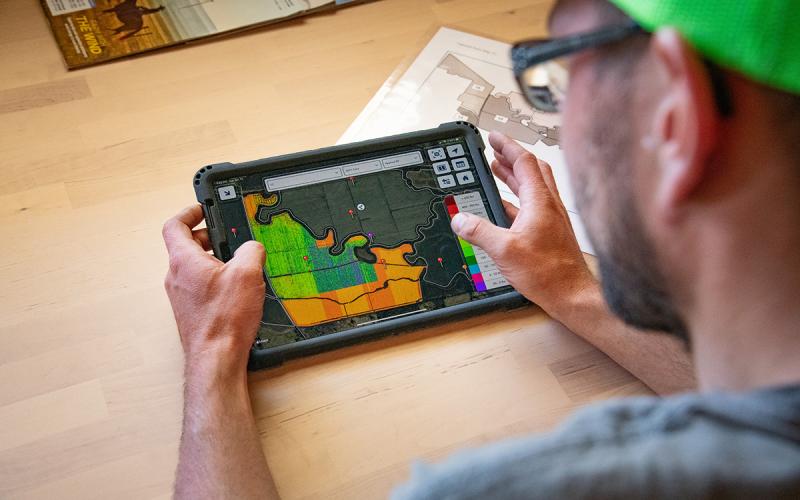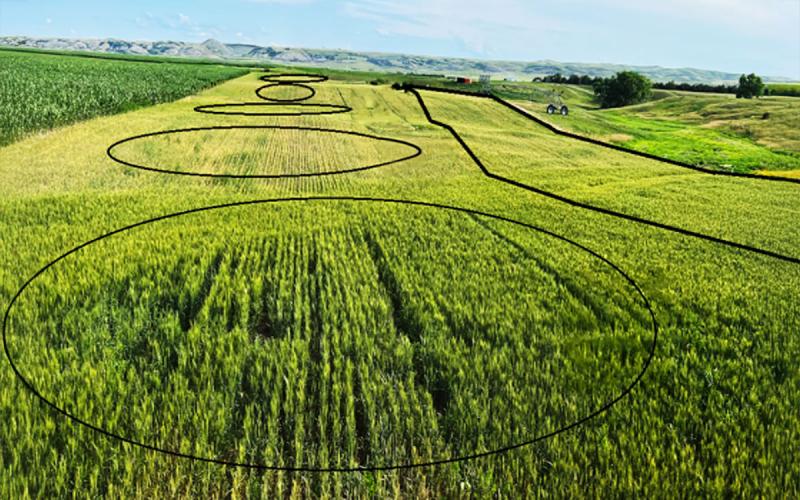Written collaboratively by Xufei Yang, Ali Nafchi, Jameson Brennan, Sushant Mehan, Logan Vandermark, Sarah Sellars, Alexander Smart, and Young Chang.
The Agricultural Internet-of-Things (abbreviated as Ag IoT) aims to connect various farm devices and equipment, including sensors, unmanned aerial vehicles (abbreviated as UAVs), pumps, and valves, to streamline operations and reduce labor for farmers. For instance, an IoT-assisted smart irrigation system enables farmers to remotely control irrigators using their home computers or cell phones. Similarly, ranchers can remotely monitor water levels and quality in livestock water tanks across their rangelands, quickly addressing equipment failures. Given the extensive size of farm operations, wireless network technologies are commonly utilized to connect these devices across the farm, eliminating the need for laying out long and costly ethernet cables (such as Cat6 cables). This article aims to introduce several prevalent wireless network technologies, focusing on their potential application scenarios in precision agriculture.
Key Considerations of Wireless Network Technologies
Wi-Fi is likely the wireless network technology most familiar to farmers. Recall how we set up a home Wi-Fi network: First, we subscribe to an Internet service from a provider and rent or purchase a modem. The modem enables us to connect to the Internet via TV cables, optical fiber networks, dish antennas, or similar means provided by the service providers. However, in most cases, the modem does not include Wi-Fi connectivity. So, we connect a Wi-Fi router to the modem using an ethernet cable.
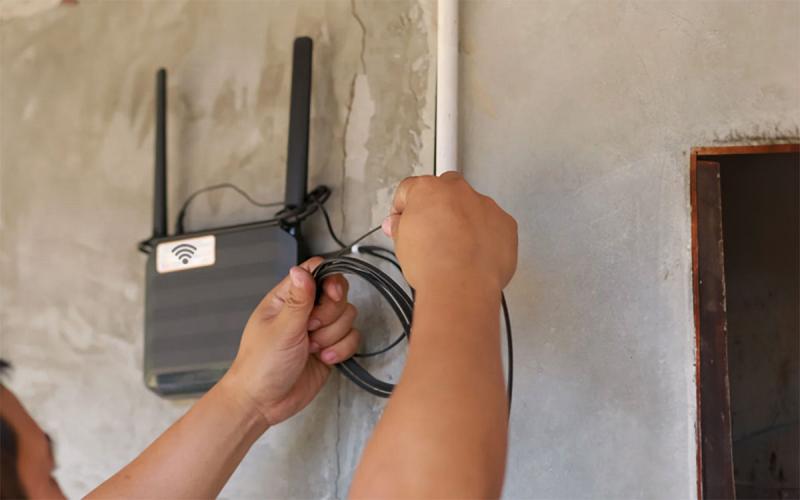
A single Wi-Fi router can serve multiple Internet devices, including cell phones, tablets, computers, and smart home appliances. However, a Wi-Fi router has limited coverage. If we have a large home, we may need a more-powerful router or Wi-Fi extenders/boosters to expand the coverage. With a Wi-Fi network, we can watch Netflix or YouTube videos, play online games, video chat with family and friends, and more. These tasks involve the transmission of large amounts of data over the Wi-Fi network, sometimes reaching hundreds of millions of data bits per second (abbreviated as Mbps).
This simple example highlights three key considerations regarding wireless network technologies:
- Range: This measures the maximum distance between a wireless transmitter and receiver to ensure effective data transmission. For Wi-Fi, this can extend up to 150 feet.
- Power: All wireless network technologies consume power to transmit data or messages over the air.
- Data Rate: This characterizes the throughput of data transmission per unit of time. For Wi-Fi 6.0, the theoretical maximum data rate can reach up to 9.6 Gbps.
It is important to recognize that these three parameters are interrelated. For any given wireless technology, increasing range (or coverage) may require higher power consumption, a reduced data rate, or both. Conversely, achieving long-range data transmission with low power consumption (as needed for battery-powered devices) will likely result in a limited data rate. These relationships also apply when comparing different wireless technologies.
Understanding Wireless Transmission
Here’s an analogy for wireless transmission. Imagine a worker tasked with moving sandbags to a high-rise building. If he carries one 40-pound sandbag (representing data rate) on his shoulder, he can climb fifteen floors (range). However, if he tries to carry two 40-pound sandbags, he may only reach the tenth floor. To transport both bags to the fifteenth floor, we would likely need to hire a stronger worker (representing power).
Prevalent Wireless Network Technologies
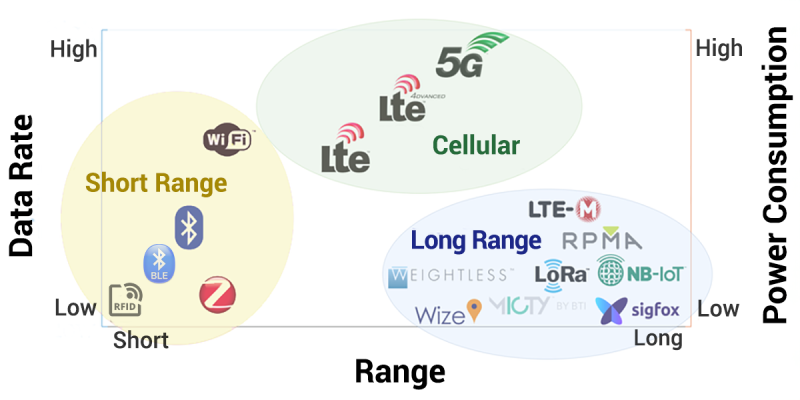
Based on range, power, and data rate, existing wireless technologies can be classified into three categories: short-range, cellular, and long-range (Figure 1). Notably, both cellular and long-range technologies offer extensive coverage. However, long-range technologies consume significantly less power than cellular ones and are commonly referred to as Low-Power Wide-Area Network (or LPWAN) technologies. As a trade-off for their low power consumption, LPWAN technologies have substantially lower data rates compared to cellular networks.
Several widely used wireless technologies for IoT communications are summarized in Table 1. In addition to Wi-Fi technology, Bluetooth, Bluetooth Low Energy (or BLE), and Zigbee are also extensively used for short-range communications, such as creating an IoT network within a barn or greenhouse that requires small coverage. Notably, both BLE and Zigbee have lower data rates but consume less power than Wi-Fi. Therefore, they are typically used for battery-powered devices or applications that do not require image or video transmission, such as water meters and temperature probes.
| Technology | Power Consumption ** | Data Rates (Mbps) | Range |
|---|---|---|---|
| WI-FI 6.0 | 5-20 W | <9,600 | 150 feet |
| Bluetooth | 1 W | 1-3 | 330 feet |
| Bluetooth Low Energy (BLE) | 10-500 mW | 1 | 100 feet |
| ZigBee | 20 mW | 0.25 | 30-300 feet |
| LTE | 1 W | 100-1000 | 6 miles |
| LoRa | Very low | <0.05 | Urban: 1.2-3 miles Rural: 9 miles |
| Sigfox | Very low | <0.003 | Urban: 2-6 miles Rural: 18-30 miles |
| NB-IoT | Very low | 0.25 | Urban: 0.6-3 miles Rural: 6-9 miles |
| LTE-M | Low | 1 | Urban: 1.2-3 miles |
*The data in this table was compiled from multiple sources.
**The actual power consumption of LPWAN technologies (LoRaWAN, Sigfox, NB-IoT, and LTE-M) depends on their duty cycle. For most of the time, these devices remain in sleep mode in an Ag IoT system.
Long-Range and Cellular Technologies
Long-range wireless network technologies are essential for managing agricultural activities across extensive areas, such as crop fields, pastureland, and feedlots. In these scenarios, agricultural IoT systems typically include numerous wireless devices, making cost a crucial consideration alongside range, power, and data rate. LTE (3G, 4G, and 5G) requires monthly subscription fees, which can make it cost-prohibitive for extensive use. However, it is effective for real-time video transmission or as a concentrator or gateway that gathers data from numerous farm devices and transmits it to the Internet via cellular network.
In contrast, Narrowband IoT (or NB-IoT) and Long-Term Machine Type Evolution (or LTE-M) are two LPWAN technologies that leverage existing cellular networks. With streamlined modulation and communication protocols, they offer lower data rates, while consuming significantly less power than LTE. Both technologies require subscription fees, but at a much lower rate than LTE. For instance, AT&T offers its LTE-M service with monthly subscriptions starting at just $1.50 per device in the United States.
Technology for Areas Without Cellular Coverage
LTE, NB-IoT, and LTE-M are limited to areas with cellular network coverage. For areas lacking such coverage, LoRa and Sigfox may be considered, both featuring an ultra-long transmission range and extremely low power consumption. A battery-powered device can operate for up to 10 years without needing a battery replacement. Sigfox is an ultra-narrow-band wireless technology patented by the French company Sigfox G0; while LoRa is a proprietary radio communication protocol owned by Semtech Corporation in France. LoRa constitutes the foundation of LoRaWAN, a widely adopted LPWAN technology. Both Sigfox and LoRa can be utilized to create affordable Ag IoT networks, particularly for applications that involve limited data rates, such as soil temperature sensors, water flow rate meters, and GPS trackers for virtual fencing (Figure 2).
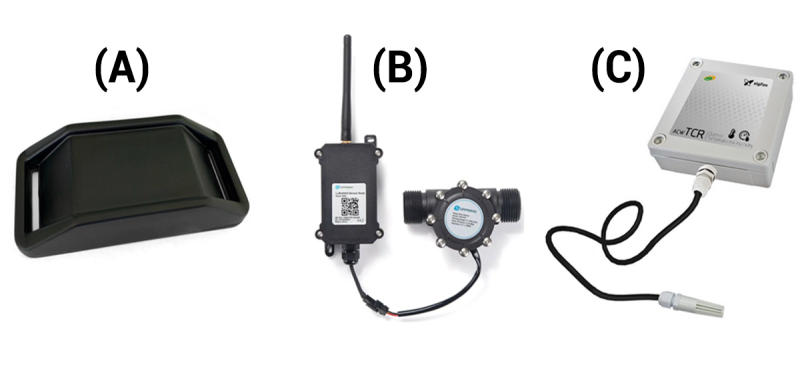
For farmers, two options are available. First, in areas with public LoRaWAN or Sigfox gateways (similar to base stations in cellular networks), one can purchase LoRaWAN- or Sigfox-compatible farm devices and connect them to these gateways. In this case, a small subscription fee may apply. Second, in areas without public gateways, farmers can purchase their own LoRaWAN or Sigfox gateways, typically costing between $200 and $800 per unit, to set up a private Ag IoT network. Depending on the network configuration, this option may incur little to no annual costs.
Cybersecurity
Different wireless technologies can present distinct cybersecurity challenges. The specific challenges and countermeasures depend on the chosen technology and the network’s configuration and setup. LPWAN technologies, particularly Sigfox, can be especially susceptible to cyberattacks. Notably, data encryption (a common cybersecurity measure) comes with a cost of data rate. For instance, with an extremely low data rate (<3 kbps), Sigfox does not implement any encryption (or encoding data messages with secret keys) for the data it transmits, making it unsuitable for applications where data security is a priority.
Choosing the Right Technology
Various Ag IoT products are now available on the market. However, the wireless technologies underlying these products fall within the categories discussed above. Below are our recommendations for choosing among these technologies:
- For real-time video transmission, choose Wi-Fi or LTE. LTE-M may be suitable for photos or low-frame, low-resolution video clips. In all these cases, a grid or solar panel is required to power the device.
- For building an IoT system inside a small building or greenhouse, choose WI-FI or Bluetooth for grid-powered devices, and use BLE or Zigbee for battery-powered devices.
- For pastureland, feedlots, or crop fields, select LoRa or Sigfox for battery-powered devices that require infrequent data transmission. Use NB-IoT or LTE-M when high data rates are needed.
- In large buildings or structures with extensive metal sheeting (for example, storage bins), consider using LoRa or Sigfox. The ultra-long range of these two technologies allows wireless signals to effectively penetrate metals and other materials.
- Be sure to carefully read product manuals and service contracts to understand all potential costs and cybersecurity issues (including data ownership) associated with the IoT products.
References
- Alahe, M. A., Wei, L., Chang, Y., Gummi, S. R., Kemeshi, J., Yang, X., ... & Sher, M. (2024). Cyber security in smart agriculture: Threat types, current status, and future trends. Computers and Electronics in Agriculture, 226, 109401.
- AT&T (2017). AT&T Launches Nationwide LTE-M Network for Internet of Things.
- Ikpehai, A., Adebisi, B., Rabie, K. M., Anoh, K., Ande, R. E., Hammoudeh, M., ... & Mbanaso, U. M. (2018). Low-power wide area network technologies for Internet-of-Things: A comparative review. IEEE Internet of Things Journal, 6(2), 2225-2240.
- Mekki, K., Bajic, E., Chaxel, F., & Meyer, F. (2018, March). Overview of cellular LPWAN technologies for IoT deployment: Sigfox, LoRaWAN, and NB-IoT. In 2018 IEEE international conference on pervasive computing and communications workshops (percom workshops) (pp. 197-202).
- Milarokostas, C., Tsolkas, D., Passas, N., & Merakos, L. (2022). A comprehensive study on LPWANs with a focus on the potential of LoRa/LoRaWAN systems. IEEE Communications Surveys & Tutorials, 25(1), 825-867.
- Rosa, L., Silva, F., & Analide, C. (2021). Mobile networks and internet of things infrastructures to characterize smart human mobility. Smart Cities, 4(2), 894-918.

